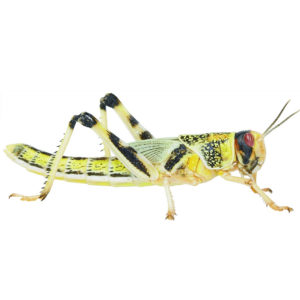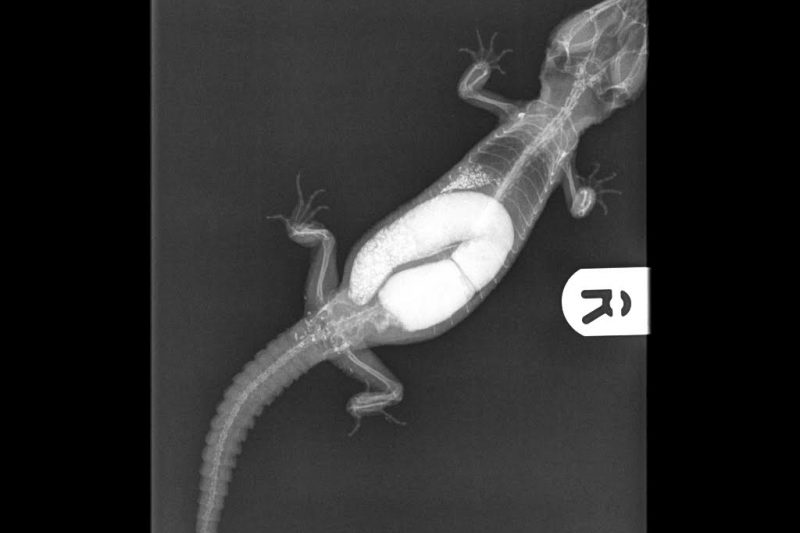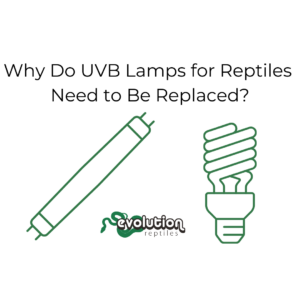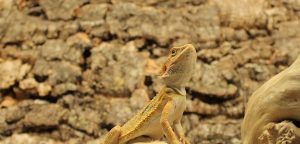
Live food Loyalty Program — Only at Our Kidlington Store!
Calling all reptile keepers and bug lovers! Stock up and earn rewards every time you purchase live foods in-store. 🦗 Get 50 Bonus Points When

The staff at Evolution Reptiles shop have to deal with a lot of varied issues every day. But, of all the contentious issues we have to deal with on a daily basis, the one that causes the most disagreement is the issue of substrates. And that is down to one factor, a word that strikes fear into any reptile keeper’s heart – impaction.
Basically, it’s when a substance forms a blockage in the intestines which prevents the normal passage of food and fluid through the gut. This blockage is more serious than just a bit of constipation – it can be fatal. The mass presses on nerves and blood vessels, causing pain and distress, until the animal goes into clinical shock and dies. It’s an awful way to end a life.
So what causes it? The short answer is anything that goes in through the mouth and, for whatever reason, can’t get out the other end. When the poor reptile (although it can occur in any animal – if it’s got a gut, it can get blocked) ends up in surgery, the vet opens the gut and finds a stinking lump of solid food and substrate the answer seems clear, doesn’t it? The reptile ate substrate, so it got blocked. Take away the substrate, job done, it was the sand what done it.
But as you might imagine, nothing is ever that simple. Failure of the gut to work properly – leading to impaction – can have many causes, including:
So we need to look at WHY the animal ate that substrate, or perhaps more accurately why that blockage (which happens to be made up of quite a lot of substrate) formed in the first place. Just removing the substrate stops the ingestion but fails to address the original problem; substrate eating very rarely happens in isolation, but is a symptom of a more serious problem. Treating the symptom without addressing the underlying problem will only make things worse.
The commonest one that we see is mineral deficiency. When an animal’s body becomes deficient in the minerals it needs to function efficiently, it takes steps to correct that imbalance – you may have seen nature documentaries of parrots or elephants gathering to eat mud for the minerals it contains. It’s an extremely common behaviour in wild animals; mineral content gets low, eat mud, mineral content improves.
However, this process needs other things to work. The body has to be able to use that mud, which means it has to be functioning within certain parameters such as hydration level, UV exposure, and temperature. If any one of those things is lacking, the mud doesn’t get processed and just sits in the gut doing nothing. The animal’s brain is still registering a deficiency, so it stimulates the mud eating behaviour once again but unless the rest of the conditions are correct it still won’t work.
More mud. More bulk. And the body is getting weaker and weaker, the muscular contractions of the gut (that should be moving the indigestible material along to the exit) become less efficient, and finally everything just stalls. The bones may be becoming soft due to the deficient state, so the pelvis may collapse and form a physical blockage even as the hind legs stop working.
So how do we stop this becoming a problem? You may have seen the fire triangle, a diagram which shows the three things that fire needs in order to burn.
Heat, fuel, oxygen. Remove any one of those things, and the fire cannot burn. In its simplest form, a reptile’s body needs three things to effectively process the mineral content that is eaten: Heat, UV, minerals. If your pet is at the correct temperature and has access to UV but too low a mineral content to the diet, it becomes deficient. If it is at the correct temperature and has correct mineral supplementation but has no access to UV, it becomes deficient. If it has minerals and UV but is too cold, it becomes deficient.
Yes, the process is almost infinitely more complicated than that at a chemical level, but when you provide all three points of the triangle you are giving your pet’s body what it needs to thrive. If you dig a little deeper in the sad cases that are splashed all over the internet you will almost always find that there are more husbandry issues than simply ‘it ate sand’.
(As a brief aside, we had an Enigma leopard gecko, a morph notorious for neurological problems, who repeatedly ate substrate. If he stepped on a beech chip and it moved, he ate it. But because he was at the correct temperature, had access to UVB and supplements, he always passed the substrate in his faeces. Because we didn’t want to tempt fate, we put him on cardboard. This is the only time in many, many years of leo keeping that we’ve had to do this.)
The next most common cause we see is dehydration. Reptiles – especially the desert living lizards most popular as pets – have an amazing ability to make the most of moisture. They are able to reclaim a large amount of the water contained in their food and rarely have to drink; in fact, many reptiles don’t appear to drink from still water at all. Unfortunately, this can lead to chronic dehydration which brings with it many highly unpleasant and life limiting conditions. Even though many of our pet species come from areas where there is no (or very little) standing water, they are adapted to lick the moisture from early morning fogs and dew falls to supplement their fluid intake. This can be replicated by misting your reptile regularly, especially if you don’t see it drink.
Reptiles have an amazing system which removes water from waste in the intestine as it travels – all animals do, but in desert living creatures it’s highly developed. If waste sits in the system for a long time the moisture continues to be removed until you are left with an object that resembles a stone blocking the gut. It’s called a ‘fecalith’, and is basically a stone made of dried, hardened poo. The only solution for this condition is surgery to remove it, so it’s very important to keep your reptile hydrated.
Foreign object obstruction comes when an animal eats something totally inappropriate, and it gets stuck either in the stomach or intestine. Coins, elastic bands, batteries, items of clothing, pieces of paper, hair bands – some animals have an insatiable curiosity as to the taste of strange objects, and the result can be a very expensive trip to the vets. If you think your pet has eaten something unsuitable, take it to the vets as soon as possible. And make sure they don’t have repeat access to that sort of item again!
Internal parasites are something that we often don’t consider to be a problem with captive bred pet reptiles on a captive bred diet. Generally, this is because they aren’t. But if your pet is wild caught, or has shared quarters with a wild caught animal, or has been outside, eaten unwashed weeds or salads or is partial to eating slugs or snails, they can be. This is not an exhaustive list – parasites are very good at finding their way into the bodies that they need to complete their life cycle. Impaction is only likely to occur when an infestation is incredibly heavy, or the animal has had parasite treatment and is carrying a heavier load than expected; in this case, the sheer numbers of dead parasites can cause a blockage. It’s unlikely to be a problem with a well cared for pet, but if you take on a rescue it’s worth bearing in mind.
Suspected infections, neurological disorders and tumours should be seen as soon as possible by a reptile experienced vet. In fact, any lumps, bumps, suspicious bulges, lack of defecation – ANYTHING – that causes you concern should be checked by a vet. If your animal is worrying you for any reason at all, then you should take it to a vet without delay.
1 – Make sure that your habitat is at the correct temperature. Warm end, cool end, temperature gradient.
2 – Species specific levels of UVB. Probably the best website out there dealing with UV in pet reptiles is www.uvguide.co.uk. Have a read, it’s excellent.
3 – Supplementation. Make sure that your pet is receiving the mineral and calcium supplements that best suit their particular needs. We can help you with that – just ask!
4 – Hydration. Keep your reptile well hydrated, and familiarise yourself with how your pet would have stayed hydrated in the wild. Would they drink from rivers or ponds, raindrops on leaves, morning fog? And no, they don’t soak it up through their bottoms when bathed.
5 – Reduce the likelihood of accidental ingestion. Feeding a bearded dragon wet lettuce on fine sand is asking for trouble – use a bowl.
6 – Don’t allow internet bullies to tell you how to keep your reptile. The internet is a marvellous tool, but anyone can post anything without having to back their knowledge up. We have to get it right, and regularly consult with experts in their field to try and stay abreast of current best practice.
7 – If in doubt, SEE A VET.
We hope you’ve found this article useful, and that it’s demystified some of the odd beliefs that surround what is a truly horrible – but ultimately preventable – condition. If you have any questions about reptiles and would like to speak face to face with someone, feel free to pop into our reptile shop in Kidlington near Oxford, and one of our reptile experts would be happy to help.

Calling all reptile keepers and bug lovers! Stock up and earn rewards every time you purchase live foods in-store. 🦗 Get 50 Bonus Points When

Why Do UVB Lamps for Reptiles Need to Be Replaced and How Often UVB lamps are essential for the health and well-being of reptiles, but

Why Reptiles Require UVB Light and How Their Bodies Use It Reptiles, unlike mammals, cannot synthesize vitamin D3 through their diet alone. Instead, they rely
Copyright 2021 Evolution Reptiles
All rights reserved.